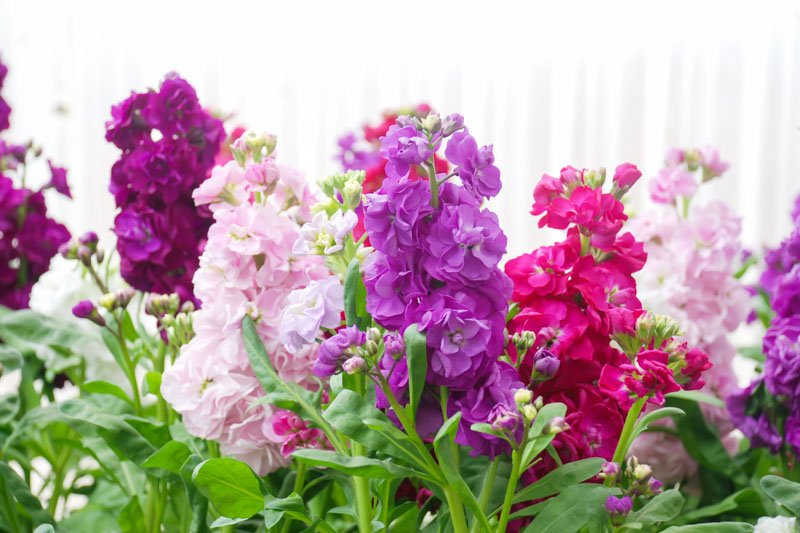- Lotus: How to Plant, Grow and Care for Lotus - 3 November 2023
- Zinnia: How to Plant, Grow and Care for Zinnia - 3 November 2023
- Coreopsis: How to Plant, Grow and Care for Coreopsis - 3 November 2023
The Stock plant is a flowering plant that is known for its beautiful blooms.
Originating from the Mediterranean region, it is now cultivated worldwide for its vibrant flowers.
With a wide range of colors available, the Stock plant adds a pop of color to any garden or floral arrangement.
About Stock:
The Stock plant is a popular choice among gardeners due to its different types and diverse characteristics. There are several different types of Stocks available including Ten Weeks, Brompton, and Vintage. Each type has its own unique features and growth patterns.
The Stock has an annual life cycle and typically blooms during the spring and summer months. It offers a beautiful display of colorful flowers that are highly fragrant and attract bees, butterflies, and hummingbirds.
Characteristics:
The Stock plant is highly valued for its ease of growth and maintenance. It is known for its extended bloom time, providing a long-lasting burst of color in any garden. Additionally, Stocks are often used as ornamental plants due to their attractive foliage and vibrant flowers. They can also be grown as fast-growing plants, quickly filling in gaps in flower beds or containers.
Growing Conditions:
Stocks thrive in full sun to part shade exposure and prefer well-draining soil. They can tolerate some drought once established and have a preferred soil pH range between 6.0 and 7.0.
Resistance:
The Stock plant is generally resistant to deer and rabbit damage, making it a great choice for gardens in areas with high wildlife populations. However, Stocks can be susceptible to certain plant diseases such as rust, fusarium wilt, downy mildew, and powdery mildew. It is important to choose disease-resistant varieties and practice good garden hygiene to minimize the risk of these diseases.
| Season | Depth | Height | Spacing | US Hardiness Zone |
|---|---|---|---|---|
| Spring, Fall | 1/4 to 1/2 inches | 12 to 30 inches | 8 to 15 inches | 7 to 10 |
Plant Care Instructions
Light Requirement
Stock plants thrive in full sun to partial shade. However, they can also tolerate full shade if necessary.
Water Need
Stock plants need regular watering to keep the soil evenly moist. Avoid overwatering, as it can lead to root rot. It’s better to underwater than overwater.
Fertilizer
Stock plants prefer a balanced fertilizer such as a 10-10-10 or 20-20-20. An organic option you can use is compost or organic granular fertilizers.
Pruning
Prune stock plants regularly to maintain their shape and encourage bushier growth. Remove any dead or faded flowers to promote continuous blooming. Cut back the plants by about one-third in late summer to encourage new growth.
Toxicity
Stock plants are non-toxic to humans and pets, making them a safe choice for households with children and animals.
Common Issues
Common issues with stock plants include powdery mildew, aphid infestation, and root rot. Ensure good air circulation around the plants and regularly inspect for signs of pests or diseases. Treat promptly to prevent further damage.
Culinary Benefits:
- Stock plants are not commonly used in the culinary world, as they are primarily grown for their ornamental value.
- However, some species of stock, such as Matthiola incana, have a pleasant fragrance that can be used in cooking.
- The flowers of stock plants can be added to salads for a pop of color and a mild floral flavor.
- Stock flowers can also be used as garnishes for desserts or added to beverages for a touch of elegance.
Medicinal Benefits:
- Stock plants have limited medicinal uses, but they do have some potential benefits.
- Stock flower extracts have been used in traditional medicine to treat respiratory problems, such as coughs and bronchitis.
- Some research suggests that stock flowers may have anti-inflammatory properties and could potentially be used to manage inflammation-related conditions.
- Stock plants are also known to attract beneficial insects, such as bees and butterflies, which can contribute to a healthy ecosystem in the garden.
Companion Plants for Stock:
1. Nettle: Stock prefers slightly acidic soil, and nettles grow well in the same conditions. Planting them together can help improve soil quality and keep pests at bay.
2. Chamomile: Chamomile is known for its calming properties and can be used to attract beneficial insects like ladybugs that feed on aphids, which are common pests of stock.
3. Daisy: Daisies are easy to grow and add beauty to any garden. They also help attract pollinators like bees and butterflies, which aid in the pollination of your stock plants.
4. Lavender: Lavender is a popular choice for its fragrant blooms and calming properties. It can also help repel pests and attract beneficial insects that feed on common pests of stock.

